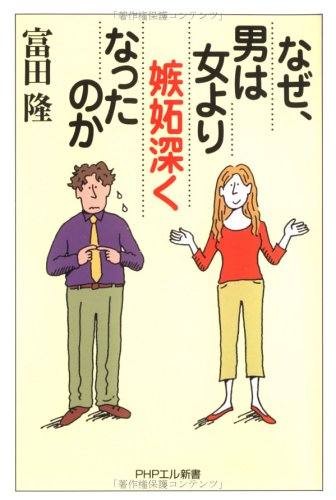34 0 0 0 OA とろみ調整食品が速崩壊性錠剤の崩壊,溶出,薬効に及ぼす影響
- 著者
- 富田 隆 幸田 幸直 工藤 賢三
- 出版者
- 公益社団法人 日本薬学会
- 雑誌
- YAKUGAKU ZASSHI (ISSN:00316903)
- 巻号頁・発行日
- vol.138, no.3, pp.353-356, 2018-03-01 (Released:2018-03-01)
- 参考文献数
- 5
- 被引用文献数
- 1 4
For patients with dysphagia in medical facilities and nursing homes, food thickeners are routinely used to aid the ingestion of medicines such as tablets. However, some types of thickeners affect the disintegration and dissolution of tablets, such as rapidly-disintegrating magnesium oxide tablets and donepezil hydrochloride orally disintegrating tablets. Additionally, delayed disintegration and dissolution of tablets affect a drug's efficacy. As an example, with Voglibose orally disintegrating tablets, marked differences are observed in changes in glucose levels during glucose tolerance testing. When using food thickeners to aid tablet ingestion, it is therefore necessary to select a product that has little effect on drug disintegration, dissolution, and activity.
15 0 0 0 視覚探索における誤反応の認知心理学的研究
11 0 0 0 全処方箋に占める変更不可処方箋の割合等の実態に関する調査
- 著者
- 太田 若菜 櫻田 大也 小林 江梨子 平舩 寛彦 千葉 健史 富田 隆 工藤 賢三 佐藤 信範
- 出版者
- 一般社団法人 レギュラトリーサイエンス学会
- 雑誌
- レギュラトリーサイエンス学会誌 (ISSN:21857113)
- 巻号頁・発行日
- vol.8, no.2, pp.95-102, 2018 (Released:2018-05-31)
- 参考文献数
- 14
後発医薬品への 「変更不可処方箋」 について調査を行った. 2017年1~3月の任意の1週間における, 岩手県薬剤師会に所属する233店舗の薬局で受け付けた処方箋75,513枚のうち, 変更不可処方箋は7,926枚 (10.50%) であった. 変更不可の指示件数は合計17,536件であり, 当該医薬品は1,714品目であった. そのうち後発医薬品のある先発医薬品が52.70%, 後発医薬品の銘柄指定が14.86%であった. 薬効分類別にみると, 循環器官用薬, 中枢神経系用薬, 消化器官用薬が上位を占めた. 変更不可の理由としては, “患者の希望” が最も多く, “医師の意向”, “薬剤変更により疾病コントロール不良・副作用の発現” などが続いた. 後発医薬品のさらなる使用推進には, 変更不可処方箋を減少させていくことが必要である. そのためには, 後発医薬品の品質向上や適切な情報提供だけでなく, 処方箋発行システムや診療報酬の面においても対策が必要である. 今後, 複数の地域で一定期間の処方箋抽出調査などを行い, 変更不可処方箋が後発医薬品の使用推進に与える影響についてさらに検討していく必要があると考えられる.
8 0 0 0 OA とろみ調整食品は速崩壊性錠剤の崩壊,溶出,薬効に影響する?
- 著者
- 富田 隆 工藤 賢三
- 出版者
- 公益社団法人 日本薬学会
- 雑誌
- ファルマシア (ISSN:00148601)
- 巻号頁・発行日
- vol.53, no.6, pp.535-539, 2017 (Released:2017-06-01)
- 参考文献数
- 8
医療施設や介護施設では,嚥下障害をもつ患者や入所者の誤嚥を防止するため,食事や服薬の際にとろみ調整食品が繁用されている.最近,薬剤服用時のとろみ調整食品の使用は,製剤の崩壊や溶出に影響をおよぼすことが分かってきた.本稿は,とろみ調整食品が,速崩壊性錠剤の崩壊,溶出,薬効におよぼす影響について,筆者らの検討事例を提示し,錠剤服用時のとろみ調整食品使用の参考資料として供するものである.
6 0 0 0 OA とろみ調整食品が酸化マグネシウム錠の崩壊と溶出に及ぼす影響
- 著者
- 富田 隆 後藤 英和 吉村 勇哉 坪内 良子 中西 利恵 小島 千賀子 米島 美穂子 吉田 正 田中 勝也 住谷 賢治 幸田 幸直
- 出版者
- 公益社団法人 日本薬学会
- 雑誌
- YAKUGAKU ZASSHI (ISSN:00316903)
- 巻号頁・発行日
- vol.135, no.6, pp.835-840, 2015-06-01 (Released:2015-06-01)
- 参考文献数
- 8
- 被引用文献数
- 11 17
It has been reported that magnesium oxide tablets are excreted in a non-disintegrated state in the stool of patients when the tablets are administered after being immersed in a food thickener. Therefore we examined whether immersion in a food thickener affects the pharmacological effect in patients taking magnesium oxide tablets, and whether immersion affects its disintegration and solubility. The mean dosage (1705 mg/d) was higher for patients who took tablets after immersion in a food thickener than for those who took non-immersed tablets (1380 mg/d). The disintegration time and dissolution rate of the immersed tablets were lower than those of non-immersed tablets in vitro. Furthermore, components that constitute the food thickener and differences in composition concentrations differentially affect the disintegration and solubility of magnesium oxide tablets. This suggests that commercially available food thickeners are likely to be associated with changes in the degradation of magnesium oxide tablets, and they therefore should be carefully used in certain clinical situations.
- 著者
- 富田 隆 後藤 英和 住谷 賢治 吉田 正 田中 勝也 幸田 幸直
- 出版者
- 公益社団法人 日本薬学会
- 雑誌
- YAKUGAKU ZASSHI (ISSN:00316903)
- 巻号頁・発行日
- vol.136, no.3, pp.517-521, 2016-03-01 (Released:2016-03-01)
- 参考文献数
- 9
- 被引用文献数
- 2 4
To avoid fluctuation of the serum lithium concentration (CLi), sodium chloride (NaCl) intake was regulated in oral alimentation. A 62-year-old woman was hospitalized and orally administered 400 mg of lithium carbonate a day to treat her mania. Her CLi was found to be 0.75-0.81 mEq/L. Vomiting made it difficult for the patient to ingest meals orally, and therefore parenteral nutrition with additional oral intake of protein-fortified food was initiated. On day 22, parenteral nutrition was switched to oral alimentation to enable oral intake of food. The total NaCl equivalent amount was decreased to 1.2 g/d, and the CLi increased to 1.15 mEq/L on day 26. Oral alimentation with semi-solid food blended in a mixer was immediately initiated. Although the total NaCl equivalent amount was increased to 4.5-5.0 g/d, her CLi remained high at 1.14-1.17 mEq/L on days 33 and 49, respectively. We investigated oral administration of NaCl (1.8 g/d) on day 52. The total NaCl equivalent amount was increased to 6.3-6.8 g/d, and the CLi decreased to 1.08-0.97 mEq/L on days 63 and 104, respectively. After the start of the orally administered NaCl, her diet was changed to a completely blended diet on day 125. The total NaCl equivalent amount was increased to 9.0-14.5 g/d, and the CLi decreased to 0.53 mEq/L on day 152; therefore, the oral administration of NaCl was discontinued on day 166. The CLi was found to be 0.70-0.85 mEq/L on days 176 and 220.
1 0 0 0 なぜ、男は女より嫉妬深くなったのか
【目的】非定型抗精神病薬や抗てんかん薬を服用すると、肥満や糖尿病などの副作用を発症することが知られている。これらの副作用は、コンプライアンスの不良を招くなど、治療上の大きな問題になっている。特に、肥満は深刻な副作用であるにもかかわらず、その発症メカニズムは不明な点が多く、予防法も確立されていない。そこで、肥満病態との関連が示唆されているアディポネクチンに着目し、以下検討した。【方法】マウス3T3-L1細胞を刺激して分化させた8日目の脂肪細胞を対象とした。まず、脂肪細胞に非定型抗精神病薬であるオランザピンとアリピプラゾール、抗てんかん薬であるバルプロ酸を作用(12時間、24時間)させ、アディポネクチンの発現に及ぼす効果を検討した。その効果は、ウエスタンブロット法あるいはReal Time-PCR法で評価した。次に、脂肪細胞にタウリンを作用させ、アディポネクチンの発現が促進するか否かを検討した。その効果は、ウエスタンブロット法で評価した。【結果】オランザピンとアリピプラゾールは、アディポネクチンの発現に影響しないことを明らかにした。また、すでに報告されているように、バルプロ酸でアディポネクチンの発現が抑制されることを確認した。新たに、タウリンでアディポネクチンの分泌が一過性に促進されることを見出した。【考察】非定型抗精神病薬や抗てんかん薬を服用すると、血清中のアディポネクチン濃度が低下する可能性がある。本研究の結果から、脂肪細胞におけるアディポネクチンの発現抑制はこれらの薬物の短期作用ではなく、長期作用により引き起こされると考えている。現在、長期作用の影響を検討している。一方、タウリンでアディポネクチンの分泌が促進されたことから、非定型抗精神病薬や抗てんかん薬を服用している患者にタウリンを投与することで肥満などの副作用が予防できる可能性が示唆された。
1 0 0 0 OA 一包化保存に適切な酸化マグネシウム粉末状製剤の検討
- 著者
- 松尾 泰佑 富田 隆 工藤 賢三 佐塚 泰之
- 出版者
- 一般社団法人日本医療薬学会
- 雑誌
- 医療薬学 (ISSN:1346342X)
- 巻号頁・発行日
- vol.45, no.1, pp.54-60, 2019-01-10 (Released:2020-01-10)
- 参考文献数
- 9
- 被引用文献数
- 1
Magnesium oxide tablets are sometimes crushed prior to administration to patients having difficulties in swallowing tablets. However, the quality of magnesium oxide formulations may decrease when stored for a long time as a one-dose package, owing to the absorption of high amounts of moisture by magnesium oxide. Additionally, as magnesium oxide solution is alkaline, it can interact with other medicines, making it incompatible for one-dose packaging. There are three types of magnesium oxide powder formulations: crushed magnesium oxide tablets, magnesium oxide bulk powder, and magnesium oxide granules. However, the appropriate formulation of magnesium oxide for one-dose packages is unknown. The stability of powder formulations stored as one-dose packages at 75% RH for 3 months was evaluated by analyzing the change in weight change and dissolution. The dissolution of the three powder formulations did not change for 3 months. Although the weight had increased in all the formulations, the change in the weight of magnesium oxide granules was the lowest among the three formulations. Isoniazid and levodopa tablets have been reported to interact with magnesium oxide tablets. The incompatibility between the crushed powder of these medicines and magnesium oxide powder formulations was analyzed when stored as one-dose packages. Among the three formulations, incompatibility was the lowest for granule. In conclusion, preserving magnesium oxide and other formulations that causes incompatibility should basically be avoided. However, magnesium oxide granules can be used for storing with the other formulations that interact with magnesium oxide within a term to circumvent incompatibility.
1 0 0 0 酸化マグネシウム錠の分割および分割錠の安定性評価
- 著者
- 松尾 泰佑 富田 隆 工藤 賢三 佐塚 泰之
- 出版者
- 一般社団法人日本医療薬学会
- 雑誌
- 医療薬学 (ISSN:1346342X)
- 巻号頁・発行日
- vol.44, no.9, pp.464-470, 2018-09-10 (Released:2019-09-10)
- 参考文献数
- 8
- 被引用文献数
- 6
Tablet splitting, an important task of the pharmacist, is performed at hospitals and health insurance pharmacies. Although magnesium oxide tablets have no score line, the accuracy of their division is not assured. Furthermore, as magnesium oxide strongly absorbs moisture, the stability of half-tablets is unknown when stored in one-dose packages. The variation and loss when splitting magnesium oxide 500 mg tablets by using a tablet-divider were evaluated. The stabilities of split tablets after storage in one-dose packages at 75%RH were evaluated through the analysis of weight change, disintegration, and dissolution. The variation in half-tablets of magnesium oxide 500 mg tablets was 5.5 ± 4.4% and the loss of almost all tablets was below 1%. Although the weight of the half-tablets increased when preserved in one-dose packages, this was related to the quantity of magnesium oxide stored in one-dose packages and not on the splitting of tablets. The disintegration time of half-tablets was prolonged by increased moisture absorption, but the disintegration time of split tablets was shorter than that of whole tablets when the same quantity of moisture was absorbed. The dissolution rate was similar among split tablets and whole tablets. Magnesium oxide tablets can be administrated as a split tablet, but caution should be exercised regarding prolonged disintegration time. Pharmacists should be careful when using half-tablets in prescriptions.

